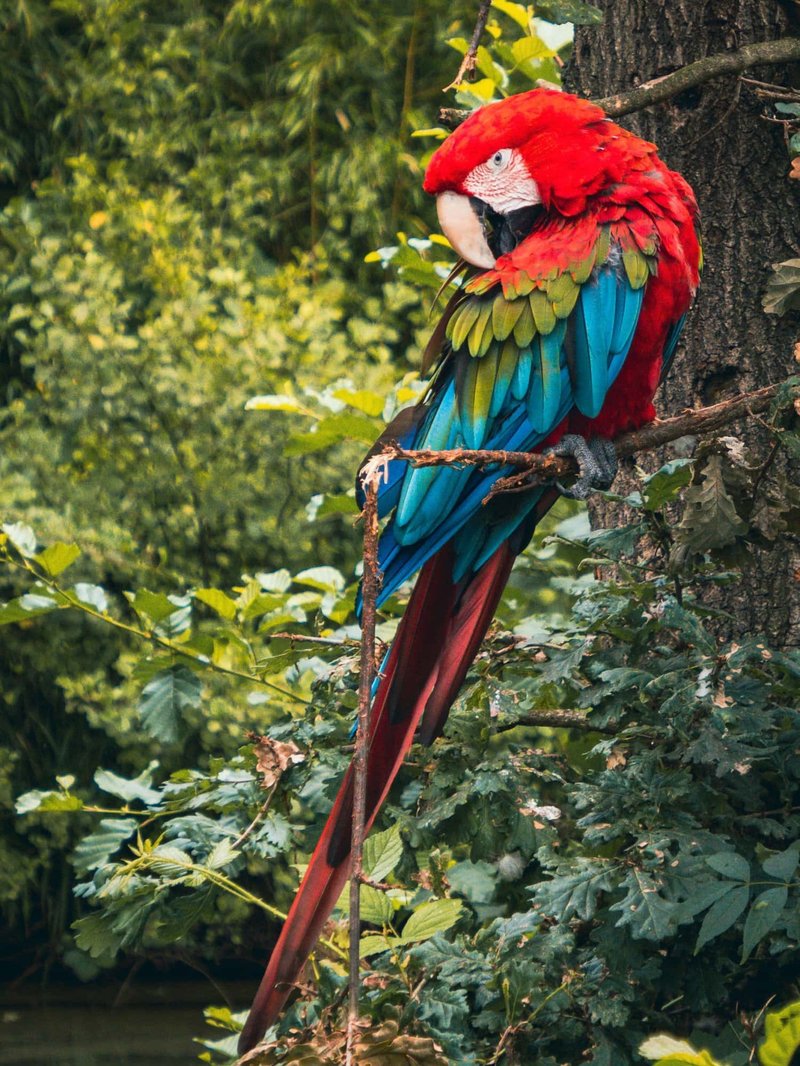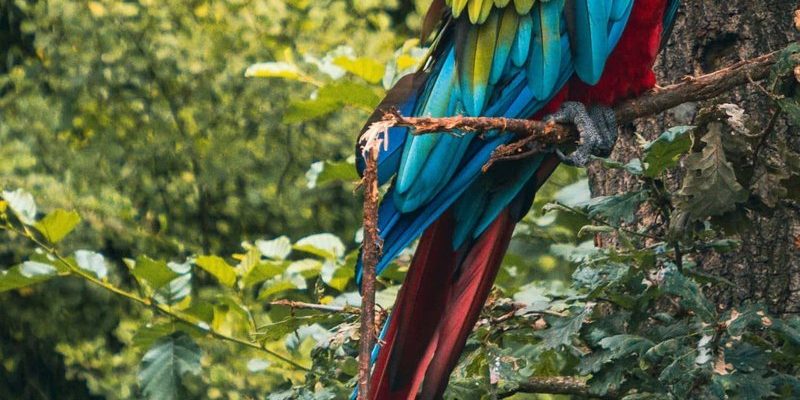
In many regions, macaws are seen as more than just pretty birds. They symbolize freedom, beauty, and even wisdom. Their fascinating behavior and social structures often inspire tales that reflect the values of the communities that revere them. Let’s dive into how the macaw is represented in culture and folklore, understanding its multifaceted roles across different societies.
Symbolism of the Macaw in Indigenous Cultures
In indigenous cultures of Central and South America, macaws are more than just colorful residents of the jungle; they’re considered sacred. For many tribes, these birds represent the spirit of the jungle, embodying freedom and the vibrant energy of nature.
These birds often appear in various myths and legends. For instance, in some Amazonian folklore, macaws are seen as messengers between the mortal world and the spiritual realm. When a macaw flies, it’s believed to carry messages to the gods. It’s a lovely thought, isn’t it? The idea that such a beautiful creature can act as a bridge between worlds adds a magical layer to their existence.
Moreover, macaws are often depicted in art and crafts. Their vivid colors inspire everything from pottery to textiles. You might find macaw motifs in traditional clothing, which not only showcases artistic expression but also pays homage to their importance in local folklore. They become a canvas for storytelling, illustrating vibrant tales woven through generations.
The Macaw in Modern Popular Culture
Fast forward to today, the macaw continues to capture hearts, not just in folklore but also in modern popular culture. Think of animated films where these birds often symbolize freedom, adventure, and friendship. One popular movie, for instance, features a macaw that embarks on a thrilling journey to find its purpose. The character’s journey mirrors many of our own quests for identity and belonging.
Besides films, macaws appear in various forms of media—books, art, and even video games. They often serve as colorful mascots or exotic symbols, representing the beauty of wildlife. Their lively demeanor and striking presence make them perfect characters to resonate with audiences. This connection might lead some to wonder: how can such a bird encapsulate so much about the human experience?
Their image is also used in conservation efforts. Organizations fighting to protect habitats often use macaws as symbols of biodiversity. By doing so, they draw attention to the importance of preserving natural spaces, creating a link between the bird and vital environmental issues. It’s fascinating how one bird can be a cultural icon and a symbol of ecological balance at the same time.
Folklore and Myths Involving Macaws
Folklore isn’t complete without stories that center around these majestic birds. In various cultures, macaws have been portrayed as tricksters or wise sages, often reflecting the duality of human nature. For example, some legends depict a clever macaw outsmarting a predator, showcasing intelligence and adaptability—traits humans admire.
In some South American myths, macaws are said to have a role in the creation of the world. These stories often involve the bird bringing color to the earth after a time of darkness. The transformation from dullness to vibrancy symbolizes hope and renewal, much like the dawn after a long night. It’s a powerful metaphor that resonates with many traditions, representing how beauty can emerge from adversity.
Interestingly, these tales often carry moral lessons. The macaw’s characteristics—its vivacity, cleverness, and social nature—often serve as reminders to embrace those qualities in ourselves. Culture has a way of using animals to teach us about who we are, doesn’t it? Reflecting on the qualities of macaws can inspire us to embody them in our daily lives.
Macaws in Art and Literature
The influence of macaws extends into the realm of art and literature, where their vibrant colors and social behavior often inspire creative expression. Artists depict these birds in various forms, using their striking plumage as a palette to explore themes of nature, freedom, and beauty.
In literature, macaws often symbolize adventure and exploration. They appear in stories that highlight the rich biodiversity of rainforests, drawing attention to the importance of conservation. By featuring these birds prominently, authors instill a sense of wonder in readers, encouraging them to appreciate wildlife and advocate for its protection.
You might also find them in poetry, where their calls and colors evoke images of lush landscapes. Poets might use the macaw as a metaphor for longing or freedom, capturing the essence of human emotion through the lens of nature. There’s something deeply relatable about that, isn’t there? These connections between us and the macaw awaken a sense of shared experience.
The Role of Macaws in Conservation Efforts
As vibrant representatives of biodiversity, macaws play a crucial role in conservation narratives. Their presence in tropical ecosystems signifies a healthy environment. Many conservation groups use the image of macaws to raise awareness about habitat preservation. The plight of these beautiful birds can shine a light on broader environmental issues, making them symbols of change.
Efforts to protect macaws often include habitat restoration and anti-poaching initiatives. Communities rally around these birds, using local folklore to engage people in conservation efforts. By connecting cultural narratives with ecological action, these groups foster a deeper understanding of the interdependence between humans and nature.
Moreover, educational programs featuring macaws help young people develop a sense of stewardship. By learning about the importance of these birds, children can grow up with an appreciation for wildlife and the environments they inhabit. It’s an investment in the future—ensuring that generations to come understand the significance of preserving our natural world.
The macaw, with its stunning colors and lively personality, is more than just a bird; it’s a symbol woven into the fabric of culture and folklore. From indigenous myths to modern media, these creatures remind us of our connection to nature and the stories it tells. They inspire us to explore, protect, and appreciate the vibrancy around us.
As we reflect on how the macaw is represented in various cultures, it’s clear these birds hold a special place in our hearts and minds. They serve as a bridge between the natural world and human experience, encouraging us to find beauty and meaning in diversity. So, the next time you hear a macaw’s call, think of the stories and values it represents, and remember the colorful threads it weaves through our cultural tapestry.

